When L’Ell told us that Takayama was one of her favorite cities in Japan and the place she always brought friends who came to visit her when she was living in Japan, we knew that come hell or high water, we would have to make our way there.
As it turns out, all we needed to brave in order to reach Takayama from Matsumoto was an extremely mountainous bus ride (and all attendant roadsickness these kind of vertiginous trips tend to leave me with!). Because Takayama is nestled at the heart of the Japanese alps, taking the train there takes forever. Although it would have been covered by our rail pass, we decided that we’d rather pay 3000Y (about $35USD) each instead to reach it in 90 minutes by bus rather than in 5 hours by train. Nausea aside (and really it was my own fault for trying to read & learn my Japanese numbers), not only did the busride shave hours off our travel time, but the winding mountain roads were so picturesque that for those alone we were happy to fork out the extra cash.
As we would learn, Takayama is a city of many charms, but the primary reason we (and many others) made the trip was to see its famous historic district. As much as Japan is conceived of as this futuristic wonderland, we have found that much of its real charm lies in its smaller towns and villages where people look back as much as they do forward. The Sanmachi district is known for its preserved merchant houses, sake distilleries and craft shops, and is touted as a slice of Japan gone by. It’s only a 10 – 15-minute walk from the bus & train station, but even the “non-preserved” areas of the town feel charming & old-fashioned in a way that seems increasingly rare in Japan. We idly ambled the streets towards Sanmachi, stopping along the way to pop into Hida Kokubunji Temple, where we admired its three-story pagoda from beneath the shaded branches of the 1200(!)-year old gingko tree that stands in its courtyard. The tree is gnarled but sturdy, and time has bestowed it with a gentle sense of majesty.

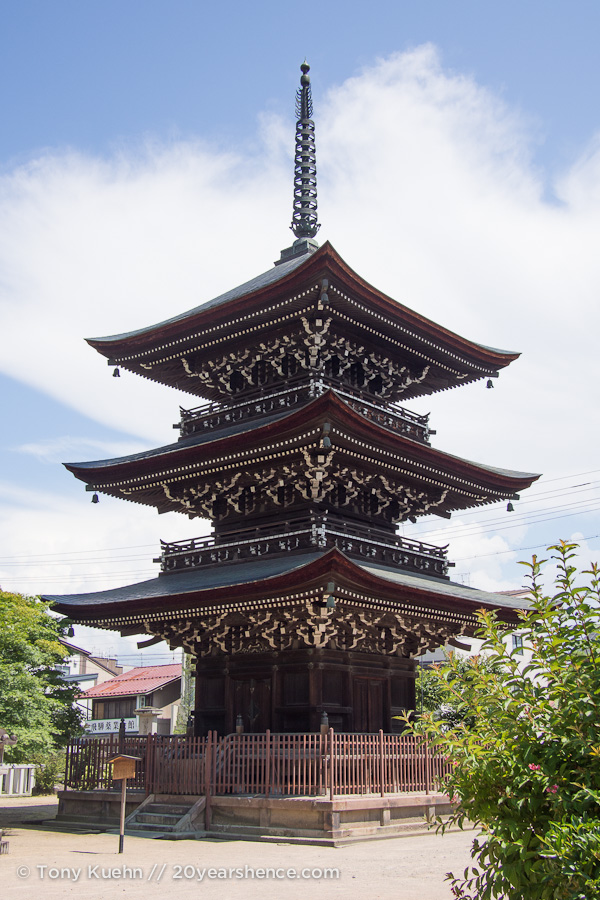
Moving on, we grabbed some streetside tempura (not the best we’ve ever had… for some reason, many Japanese people seem unfazed by eating lukewarm tempura, even though this means it tends towards limp and soggy, rather than crisp & crunchy!). We also munched on one of the local specialties, mitarashi dango, which is essentially comprised of sticky rice balls that are slathered in soy sauce, skewered, and then grilled over open flame. For simple food, they were remarkably tasty and they made us wish we were spending more time here simply so that we could sample more of the local fare.
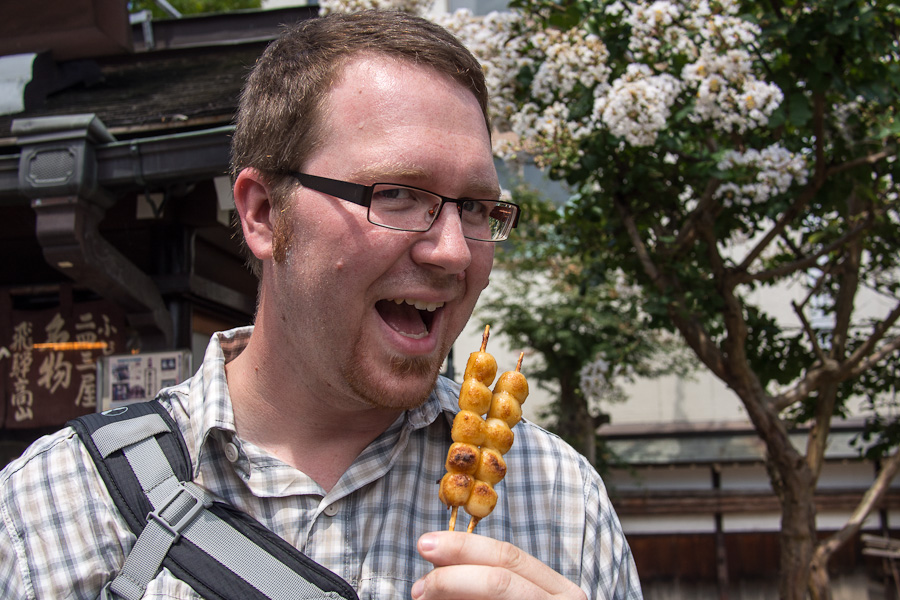
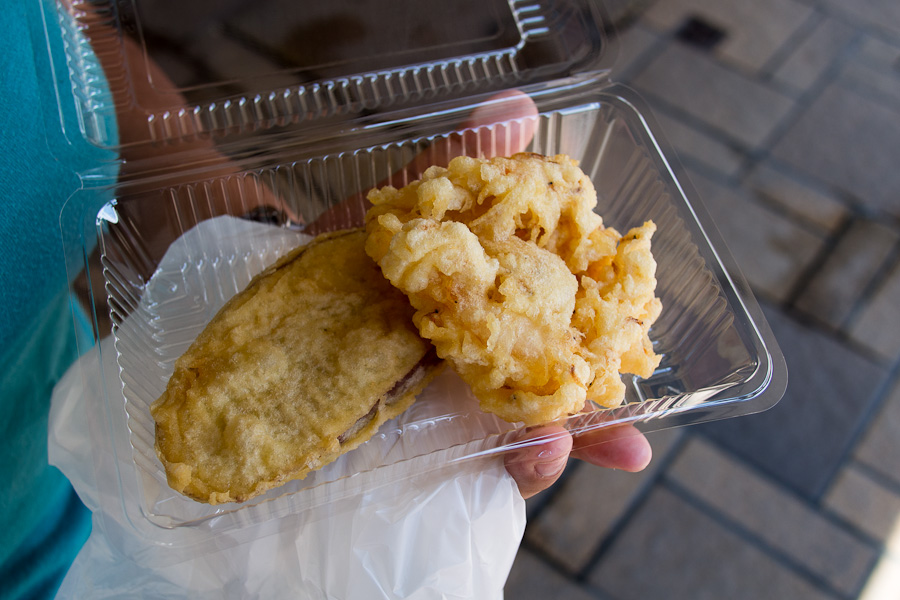
As we wandered by the Miya-gawa, we caught the tail-end of a morning market, which takes place on its river banks. Although many stalls were packing up, we got to sample some Japanese sesame candy and marvel at the booths filled with crafts intermixed with tables laden with veggies harvested fresh from the earth.

With one turn to the right, we found ourselves smack dab in the middle of the famed historic district. In an instant, we understood why people make the trip to this little town, but also found ourselves wondering why you would ever go anywhere else in Japan. While I think it’s fair to say that Takayama sees its fair share of tourists, for a place so amazingly pretty—and yes, quaint—we shared the streets with only a handful of other foreigners.
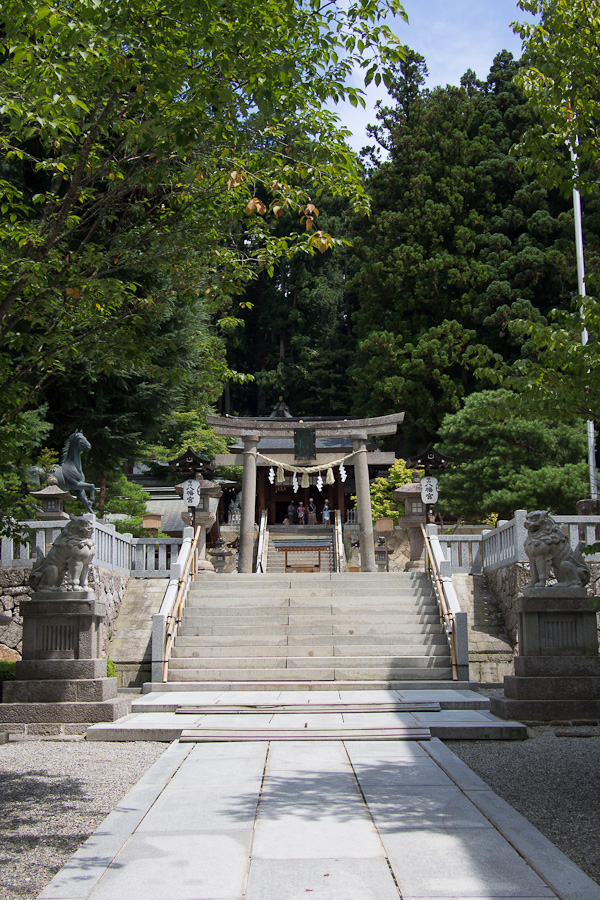



Although we likely would have been content to spend the rest of the day simply strolling the streets of Takayama, we decided to splurge and visited the float museum (Takayama Yatai Kaikan), so we could get a taste of the spectacle involved in Japanese parades. As we had wandered the streets, we had come across several “double-decker” garages, which are used to store the floats during the year. The floats are so large and so grand that the museum can only exhibit 4 or 5 of the 23 existing floats at any given time. At 820Y per person, the museum was definitely on the pricey side, however it was well worth it to get to see some of the floats in person. They were so ornate & intricate, it was easy to imagine how lively and festive the parades in which they feature must be. Particularly impressive were the floats that involved complex puppetry (some of them involving the work of four master puppeteers!); a video playing in the museum’s “study room” demonstrated just how dynamic these floats are when they are paraded through Takayama’s narrow streets. While I would not go so far as to say that the puppets ascend to the status of lifelike, the skill of the puppeteers and what they are capable of accomplishing truly was impressive.

Out behind the float museum, we found a small temple complex surrounded by a variety of shrines. Although we always enjoy the shrines that are watched over by inari (foxes), my favorite of the day was shrine where many people had left old calligraphy brushes as offerings. Apparently by making such an offering, one will be gifted in future scholastic endeavors or with heightened writing skills. In a modern twist, alongside many of the brushes, we saw several ballpoint pens had been offered up as well. I wonder, will we one day see people offering up ipads and netbooks?
Also included with our ticket to the museum was a visit to Nikkokan, a building that houses a 1/10 scale replica of the temples of Nikko. I will say that this is not the last time on this trip that we would encounter what seems to be an Asian fascination with miniaturized scale models of famous buildings. Since admission was free, we took a quick look, despite having already seen the real deal a few days previous. One of the big draws is apparently the state-of-the-art lighting system that lets you observe Nikko as it appears at both sunrise and sunset (the most magical times of day!). Painstaking attention to detail was evident in all of the models and you have to admire the dedication and care that went into it all, but we still couldn’t help but wonder if the whole reason this was bundled with the float museum ticket is because otherwise no one would ever go see this! I mean, I get that people have different passions and everything (as evidenced by the guy who had brought tons of professional camera gear to photograph these models), but even taking into account the slow trains in the region, you could still reach the real Nikko in less than 6 hours! So what is the appeal to this model? If anyone has any insights, please share!

We only had the chance to spend a few hours exploring Takayama, because our first CouchSurfing experience would whisk us away to the nearby village of Furukawa that evening, an opportunity that was simply too good to pass up. Although Takayama itself is not very large and we covered a good portion of it on foot, we are certain that half a day really was not enough time to unearth all the treasures this place has to offer. We would have loved to take a day-trip to see the famous open-air museum at Shirikawa-Go featuring the famous steep-roofed farmhouses (and beautiful countryside!), strolled in the parks and browsed in the shops, and yes, eaten more of the delicious local foods! On this trip to Japan we decided not to stay in a ryokan (sacrilege, I know! But we had many other splurges and felt confident we would return one day and could save our ryokan experience until then), but we think staying at one in Takayama would be ideal. For a small town, it seems we left it with a lot of unfinished business!
I often feel like guidebooks are a little too liberal in their claims that cities offer you a blast from the past, but here the label of “old Japan” felt accurate rather than hyperbolic. While it’s true that Takayama is no longer a shrinking violet when it comes to the tourist circuit in Japan (it has long held favor with Japanese tourists and has become increasingly known to foreign tourists as well, as evidenced by the prominent lodging and shopping options that are clearly marketed at visitors), it manages to feel as though the city has retained its intrinsic charms rather than selling out. It’s a special place and though we didn’t get to spend much time there, it won us over quickly, and it wasn’t hard to see why L’Ell is so fond of it. I have a feeling that during this year seeing the world, we’ll encounter many places where we wish we could stay longer or that we’ll put on the list to someday return. For now, Takayama is on the top of that list.
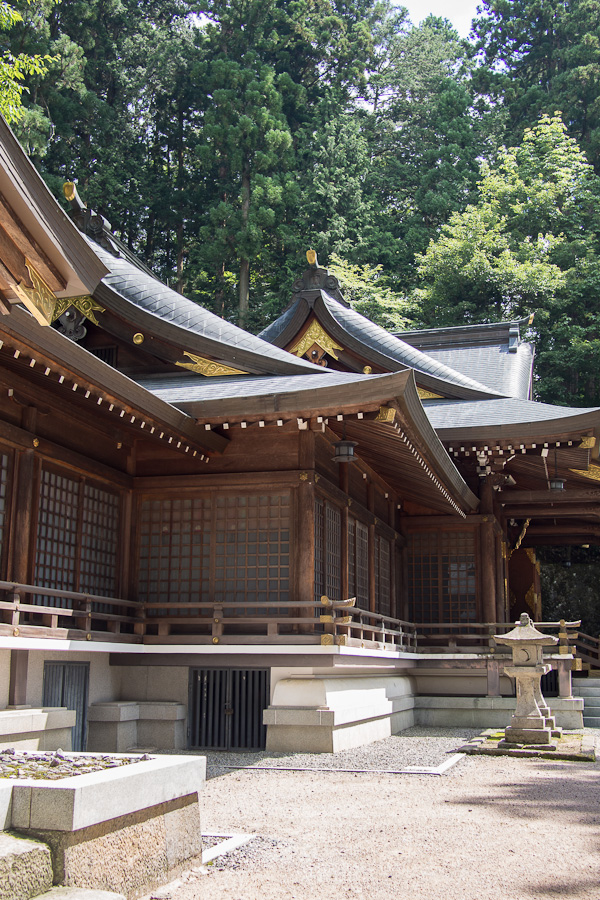
Gosh, that traditional style of Japanese architecture is just so beautiful. I love how natural is looks setting there in the trees. Looks like a great side trip!
The houses really were beautiful in Takayama, though to be honest, we did see a few places in Japan with similar architecture! That said, there are many reasons to visit this place (like the food!) so the pretty setting is just one reason to come! 🙂
As travelers, when we discover a place and then really want to return there, that really does mean there was something special about it. Takayama looks great, and if I visit Japan, I will make effort to check it out – thanks for the tip!
Yeah, so far every country we have visited has had enough draws (and we have enjoyed them enough) that we have left saying we would love to go back some day, but I think it is the rare city that makes you want to return for a second go around. There were a few places we visited in Japan that were nice and we enjoyed our time there, but on a return trip would not feel the need to go back. We just didn’t get enough time in Takayama!